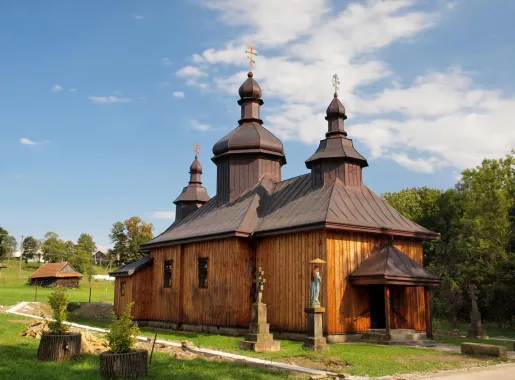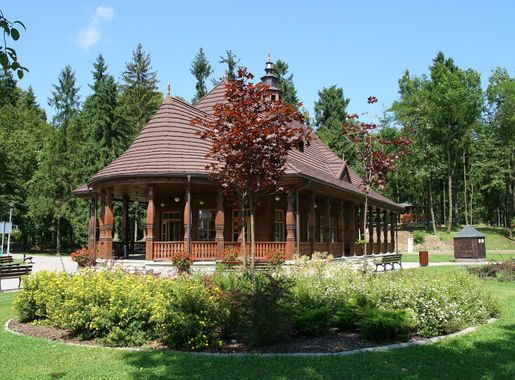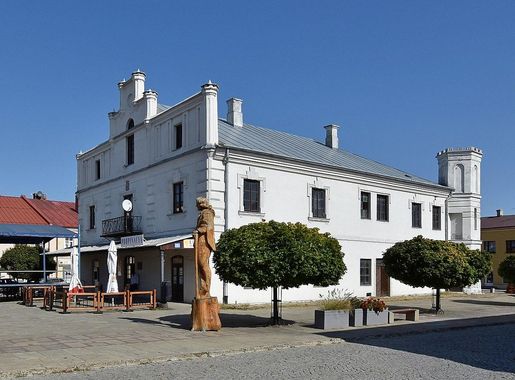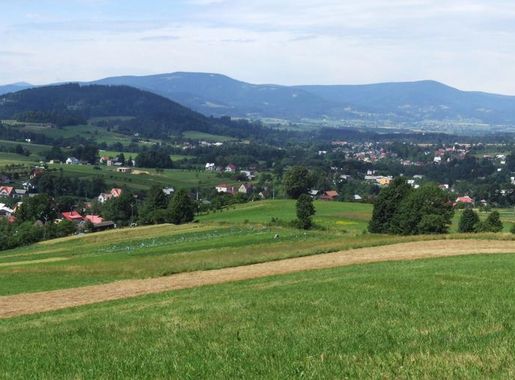
Exploring the Untouched Beauty of the Beskid Niski Mountains
Discover the serene beauty and rich cultural heritage of the Beskid Niski Mountains in Poland – a perfect getaway for nature lovers and adventure seekers alike.
The Beskid Niski Mountains, nestled in the southeastern part of Poland, offer a tranquil retreat for those seeking a break from bustling city life. Known for their rolling hills, lush forests, and serene valleys, these mountains are a haven for nature lovers and outdoor enthusiasts. The region is less commercialized compared to other Polish mountain ranges, providing a more authentic and peaceful experience. The area is rich in cultural heritage, with numerous wooden Orthodox churches and quaint villages dotting the landscape. These historical sites tell the story of the Lemko people, an ethnic minority with a unique culture and traditions. Visitors can explore these charming villages and learn about the local way of life, which has remained largely unchanged for centuries. For adventure seekers, the Beskid Niski Mountains offer a variety of outdoor activities such as hiking, cycling, and horse riding. There are numerous well-marked trails that cater to all levels of fitness, making it easy to immerse oneself in the natural beauty of the region. In the winter, the mountains transform into a winter wonderland, perfect for cross-country skiing and snowshoeing. Whether you are looking to unwind in nature, delve into the region's rich history, or embark on an outdoor adventure, the Beskid Niski Mountains are a hidden gem worth discovering.
Local tips in Beskid Niski Mountains
- Visit the wooden Orthodox churches, part of the UNESCO World Heritage Sites.
- Try traditional Lemko cuisine in local village eateries.
- Pack comfortable hiking shoes for exploring numerous trails.
- Winter visitors should bring appropriate gear for cross-country skiing.
- Check weather conditions before planning your trip, as the area can be remote and weather can change quickly.
Exploring the Untouched Beauty of the Beskid Niski Mountains
The Beskid Niski Mountains, nestled in the southeastern part of Poland, offer a tranquil retreat for those seeking a break from bustling city life. Known for their rolling hills, lush forests, and serene valleys, these mountains are a haven for nature lovers and outdoor enthusiasts. The region is less commercialized compared to other Polish mountain ranges, providing a more authentic and peaceful experience. The area is rich in cultural heritage, with numerous wooden Orthodox churches and quaint villages dotting the landscape. These historical sites tell the story of the Lemko people, an ethnic minority with a unique culture and traditions. Visitors can explore these charming villages and learn about the local way of life, which has remained largely unchanged for centuries. For adventure seekers, the Beskid Niski Mountains offer a variety of outdoor activities such as hiking, cycling, and horse riding. There are numerous well-marked trails that cater to all levels of fitness, making it easy to immerse oneself in the natural beauty of the region. In the winter, the mountains transform into a winter wonderland, perfect for cross-country skiing and snowshoeing. Whether you are looking to unwind in nature, delve into the region's rich history, or embark on an outdoor adventure, the Beskid Niski Mountains are a hidden gem worth discovering.
When is the best time to go to Beskid Niski Mountains?
Iconic landmarks you can’t miss
Wieliczka Salt Mine
Explore the stunning Wieliczka Salt Mine, a UNESCO World Heritage Site filled with breathtaking salt sculptures and rich history near Kraków.
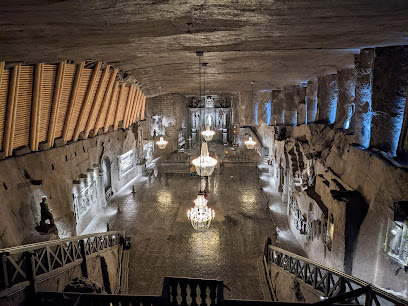
Pieniny National Park
Explore the stunning landscapes and rich biodiversity of Pieniny National Park, a must-visit natural wonder in Poland for every nature lover.

Bieszczady National Park
Explore the stunning landscapes and diverse wildlife of Bieszczady National Park, a tranquil haven for outdoor enthusiasts in Poland.
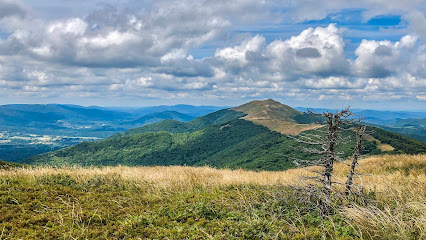
Tatra National Park, Poland
Discover Tatra National Park, an enchanting natural paradise in Poland, where stunning landscapes, diverse wildlife, and thrilling adventures await.
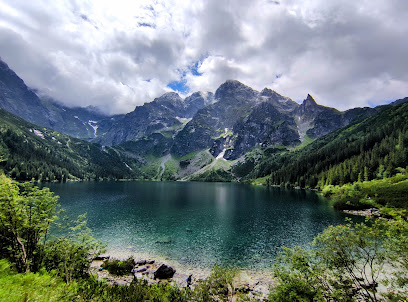
Babia Góra National Park
Experience the breathtaking beauty of Babia Góra National Park, a Polish gem offering stunning landscapes, rich biodiversity, and unforgettable outdoor adventures.
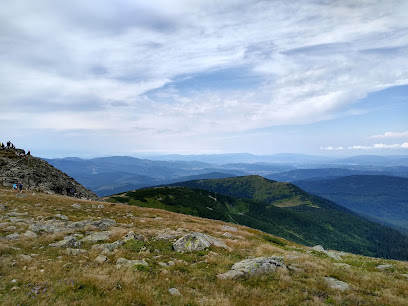
Sarnia Skała
Discover the breathtaking Sarnia Skała in Tatra National Park, a top destination for nature lovers and adventure seekers in Poland.
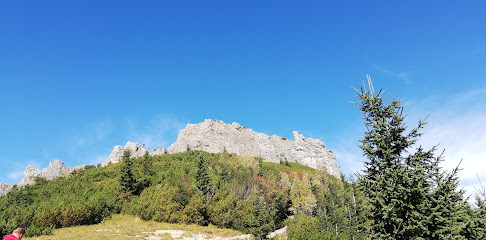
KiczeraSki
Experience the thrill of winter sports at KiczeraSki, Rymanów's premier ski resort, offering stunning views and activities for all skill levels.
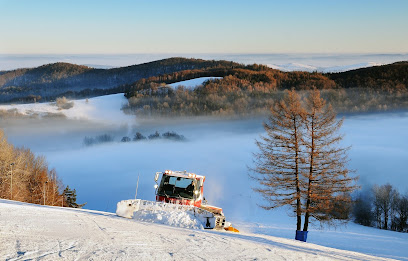
Jaskinia Głęboka
Explore the mesmerizing beauty of Jaskinia Głęboka, a natural wonder in Podlesice featuring stunning caves, rich biodiversity, and breathtaking landscapes.
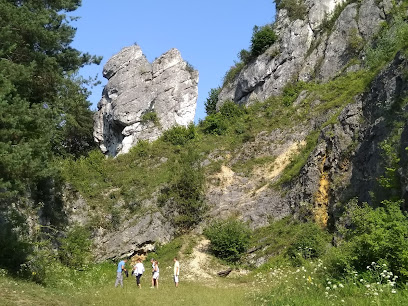
Bieszczady Mountains
Discover the untouched beauty and adventure of the Bieszczady Mountains, a hidden gem in Poland perfect for nature lovers and outdoor enthusiasts.
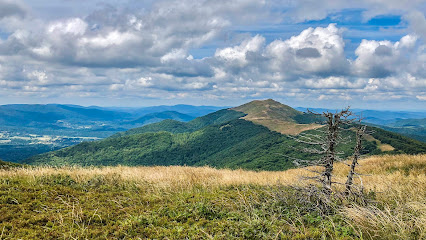
Kinga Hotel Wellness
Discover tranquility and adventure at Kinga Hotel Wellness in Czorsztyn, where stunning landscapes meet luxurious relaxation.

Diabli Kamień
Explore the enchanting Diabli Kamień in the Beskid Niski mountains, where breathtaking hikes and captivating rock formations await every nature lover.
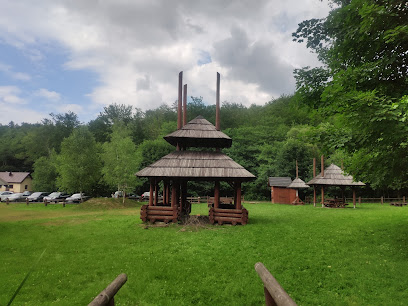
Magura Wątkowska
Experience the serene beauty of Magura Wątkowska, a stunning nature preserve in the Beskid Niski mountains, perfect for nature lovers and outdoor enthusiasts.
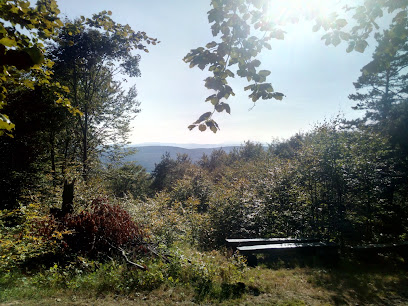
Magura National Park
Explore the stunning landscapes and rich biodiversity of Magura National Park, a true gem for nature lovers in Poland.
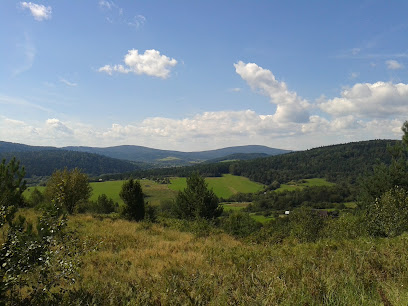
Beskids
Discover the breathtaking landscapes and rich traditions of the Beskids Mountain Range, a premier destination for nature lovers and adventure seekers in Poland.
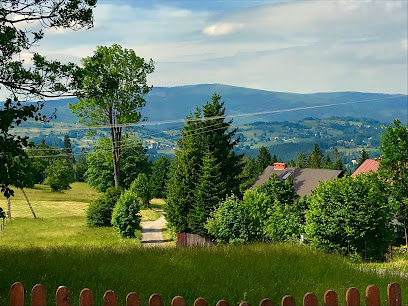
Magurska Ostoja
Experience the serene beauty of Magurska Ostoja, a cozy bed and breakfast in rural Poland, perfect for nature lovers and adventure seekers.
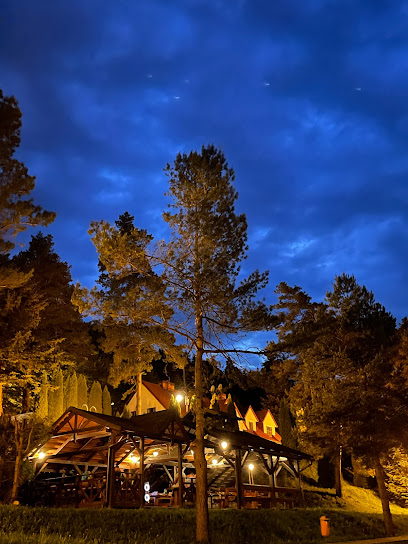
Unmissable attractions to see
Diabli Kamień
Explore the breathtaking Diabli Kamień in Folusz, a must-see natural attraction perfect for hiking and experiencing Poland's stunning landscapes.
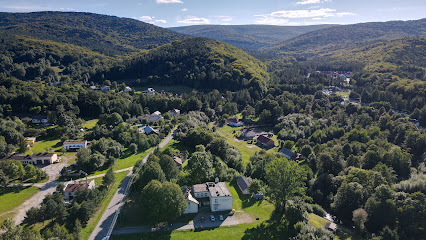
Zalew w Krempnej
Experience the serene beauty of Zalew w Krempnej, a picturesque reservoir perfect for outdoor activities, relaxation, and nature appreciation in Poland.
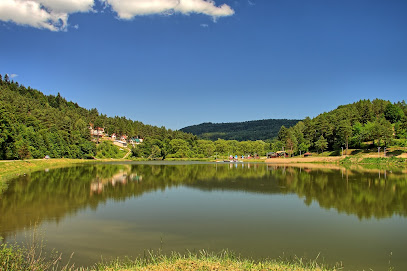
Magurski waterfall
Discover the enchanting beauty of Magurski Waterfall in Folusz, a serene natural wonder perfect for nature lovers and adventure seekers.
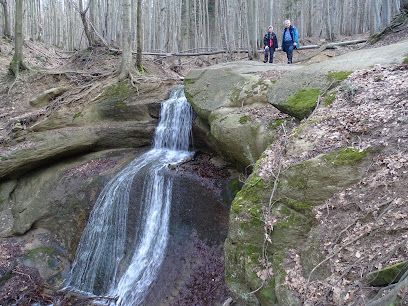
Magura Wątkowska
Explore the breathtaking landscapes and rich biodiversity of Magura Wątkowska, a hidden gem in Poland's Beskid Niski mountains.
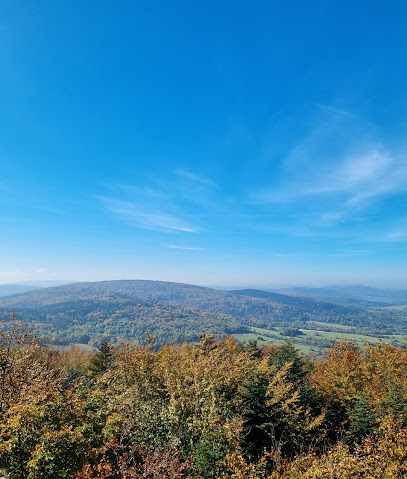
Magura National Park
Explore the breathtaking landscapes and rich biodiversity of Magura National Park, a must-visit destination for nature lovers in Poland.
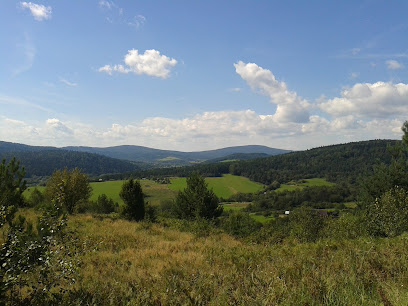
Sucha Góra (Beskid Niski)
Explore the breathtaking beauty of Sucha Góra in the Beskid Niski mountains, where nature and adventure await every traveler.
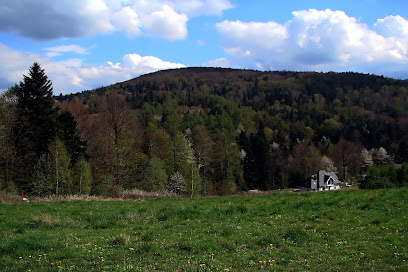
Beskid Niski
Explore the serene landscapes and rich biodiversity of Beskid Niski, an ecological park in Krempna, Poland, perfect for nature lovers and adventure seekers.
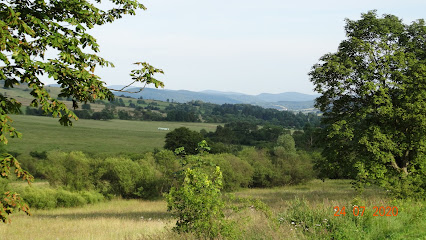
Essential places to dine
Zadyma
Discover authentic Polish cuisine at Zadyma in Niedzica - where tradition meets taste amidst stunning landscapes.
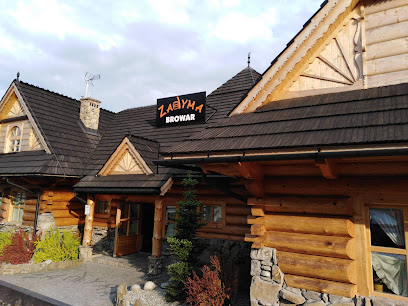
Wilcza Jama
Discover Wilcza Jama: A charming Polish restaurant and bed & breakfast in Smolnik offering authentic cuisine amidst beautiful gardens.
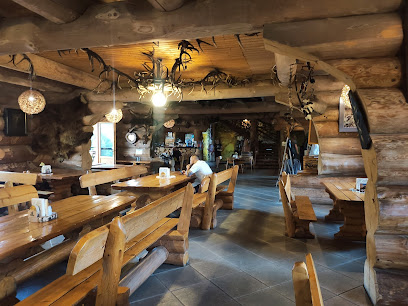
Restauracja Chata Starych Znajomych
Discover authentic Polish flavors at Restauracja Chata Starych Znajomych in Sanok – where tradition meets comfort.
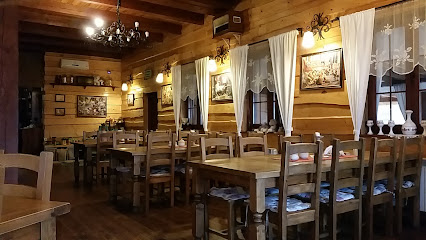
Zamek Dubiecko
Discover Zamek Dubiecko: A captivating castle restaurant blending exquisite dining with rich Polish history in the heart of Dubiecko.
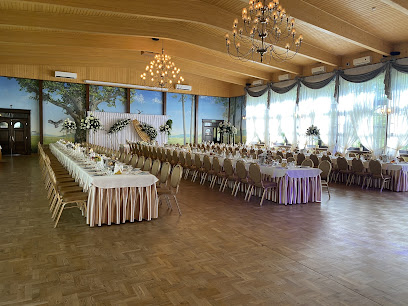
Hotel i Restauracja - Zajazd Pod Skałą
Experience authentic Polish cuisine and family-friendly hospitality at Zajazd Pod Skałą in Krajowice.
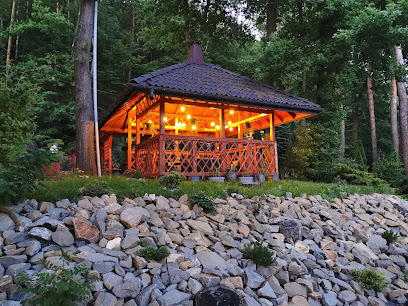
Hotel Restauracja Dwór Ostoia
Experience authentic Polish flavors and craft brews at Hotel Restauracja Dwór Ostoia in Klimkówka - where tradition meets comfort.

Restauracja Hotel Pod Herbami
Discover the essence of Polish hospitality at Restauracja Hotel Pod Herbami, where authentic flavors meet cozy accommodations in stunning surroundings.
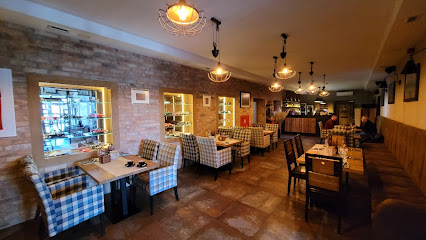
Bacówka Polany
Experience family-friendly lodging at Bacówka Polany - where comfort meets nature's beauty in a charming Polish retreat.

Markets, malls and hidden boutiques
Auchan Rzeszów Krasne
Experience the vibrant shopping scene at Auchan Rzeszów Krasne, your go-to hypermarket for essentials and unique local finds.

Auchan Nowy Sącz
Explore a shopping haven at Auchan Nowy Sącz, where local flavors and international products meet convenience and quality.

Kaufland Krosno
Explore local and international flavors at Kaufland Krosno, your essential shopping spot in the heart of Poland.
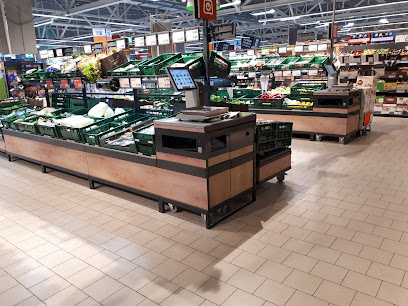
Kaufland Gorlice
Explore local flavors and fresh produce at Kaufland Gorlice, the ultimate supermarket experience for tourists in Poland.

Kaufland Jasło
Discover Kaufland Jasło: A vibrant supermarket offering local produce, international products, and a taste of Polish culture in the heart of Jasło.
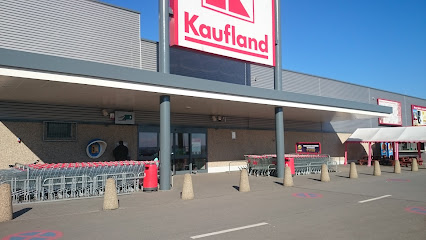
Center Ursa Major
Explore the unique blend of craft beers and local art at Center Ursa Major in Uherce Mineralne, your cultural retreat in Poland.

Carrefour
Discover the flavors of Poland at Carrefour in Nowy Sącz, your ultimate shopping destination for fresh produce, local delicacies, and more.

Decathlon Nowy Sącz
Explore Decathlon Nowy Sącz for top-quality sports gear, from bicycles to outdoor apparel, perfect for every adventure seeker.
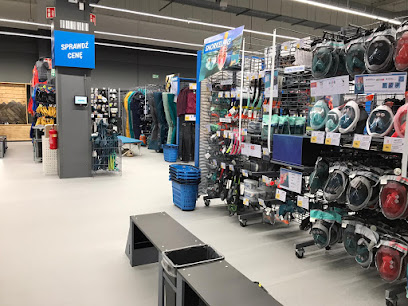
Trojan Sport
Discover top-notch ski and snowboard gear at Trojan Sport, Krynica-Zdrój's premier destination for winter sports enthusiasts.

Agroturystyka Malowane Wierchy
Discover the enchanting Agroturystyka Malowane Wierchy: a serene farmstay experience in Gładyszów, combining adventure, relaxation, and local charm.
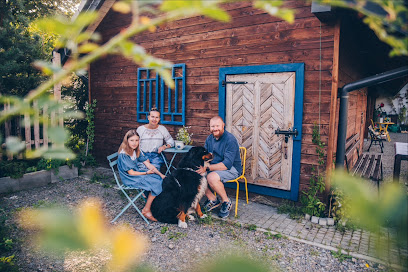
Sklep sportowy w Nowym Sączu KUGUAR - Rowery, Narty, Sprzęt na siłownię, Fitness, Turystyka
Explore KUGUAR in Nowy Sącz for top-quality sporting goods, including bikes, skis, and fitness equipment to fuel your adventure.
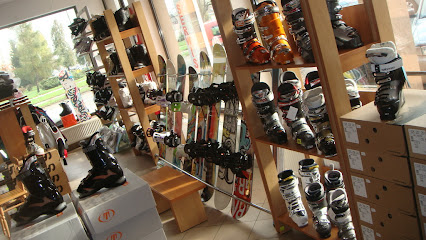
ROJAX KROSNO - ROWERY - SPORT, Autoryzowany dealer KROSS, Scott, Giant, Kellys, Unibike, Cube,
Discover the best cycling gear and bikes at Rojax Krosno, your ultimate destination for biking adventures in Poland.
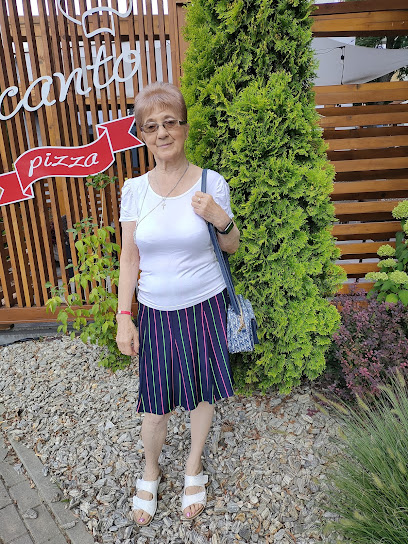
Sklep Rowerowy IwoBike
Discover the best in cycling at IwoBike, Gorlice's top bicycle store, featuring electric bikes and expert advice for all cycling levels.
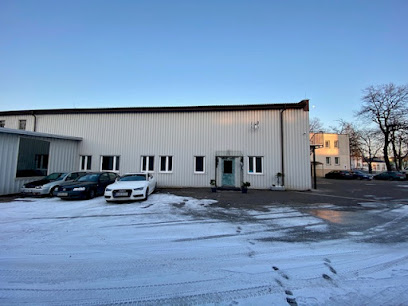
Gór Stal Sp. o.o.
Explore Gór Stal Sp. o.o. in Gorlice, a key player in building materials manufacturing, showcasing local craftsmanship and industrial heritage.

Sklep Rowerowy Ostre Koło
Discover the ultimate cycling experience at Sklep Rowerowy Ostre Koło in Gorlice - where quality bikes meet expert repairs for every adventure.
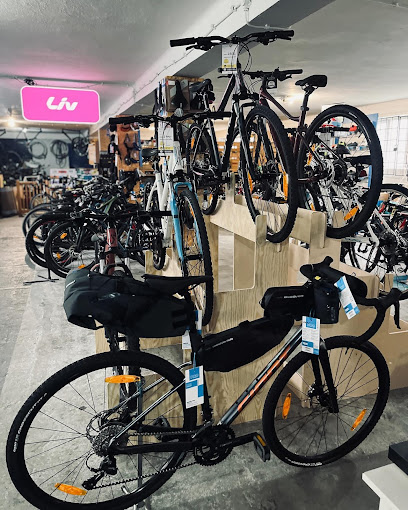
Essential bars & hidden hideouts
Wilcza Jama
Experience the best of Polish cuisine and nature at Wilcza Jama, a delightful restaurant and bed & breakfast in Smolnik, southern Poland.

Nowy Kraftowy
Experience the vibrant flavors of Kraków at Nowy Kraftowy, a premier gastropub offering craft beers and delicious local cuisine in a lively atmosphere.
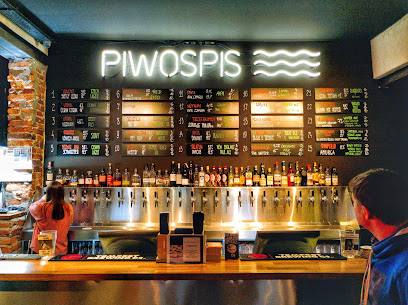
Cybermachina Game Pub - Kraków
Explore the vibrant nightlife of Kraków at Cybermachina Game Pub, where gaming meets socializing in a lively atmosphere.
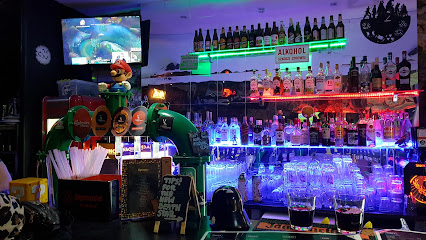
Omerta
Discover the heart of Kraków's nightlife at Omerta, a vibrant pub offering a cozy atmosphere and a diverse drink selection.
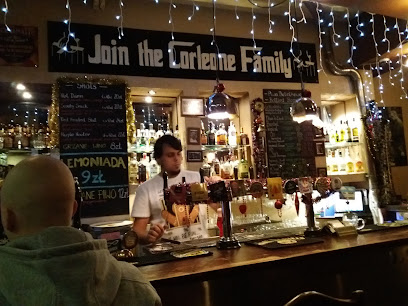
Eszeweria
Discover the vibrant atmosphere of Eszeweria, a must-visit bar in Kraków offering a unique drink selection and delightful ambiance.
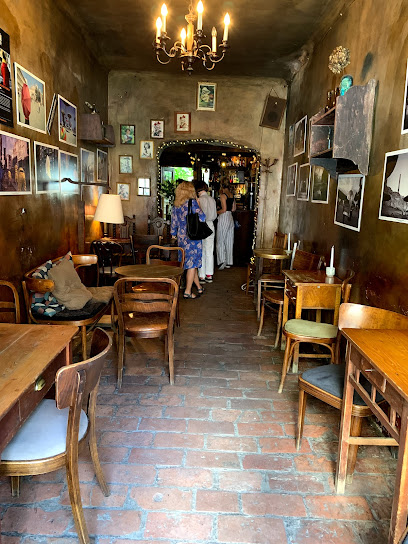
Oberża Pod Kudłatym Aniołem
Experience the charm of Oberża Pod Kudłatym Aniołem, where delicious local cuisine meets cozy accommodations in the heart of the Bieszczady Mountains.
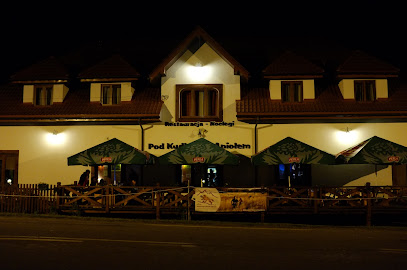
Trzcina cocktail bar
Discover Trzcina Cocktail Bar, where expertly crafted cocktails meet a vibrant atmosphere in the heart of Kraków's nightlife.
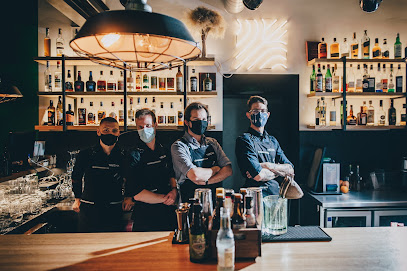
Dark Pub Restaurant & Motel
Discover the culinary delights and cozy accommodations at Dark Pub Restaurant & Motel in Gorlice, where local charm meets modern comfort.
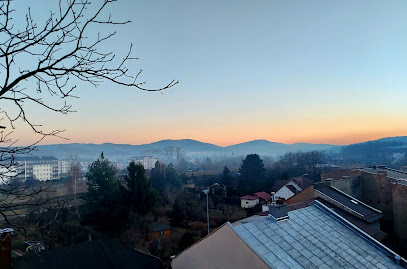
Cafe Piano Zakopane
Experience the cozy charm of Cafe Piano in Zakopane, where live music and delightful drinks create unforgettable memories.
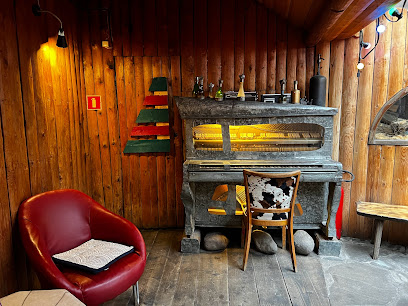
Duffy's Irish Bar
Discover authentic Irish flavors and vibrant nightlife at Duffy's Irish Bar in Kraków's historic Stare Miasto district.
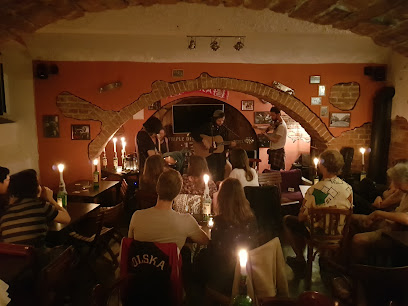
Bacówka Pod Honem PTTK w Cisnej
Discover the serene beauty of Bacówka Pod Honem PTTK, a charming mountain cabin offering comfort, adventure, and authentic Polish cuisine in the Bieszczady Mountains.
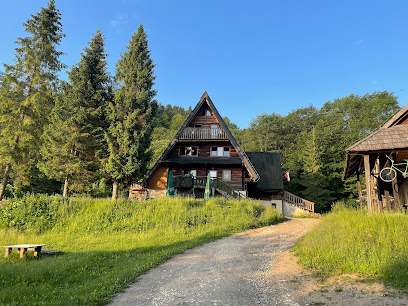
Hotel i Restauracja - Zajazd Pod Skałą
Discover Zajazd Pod Skałą - the perfect blend of comfort, delicious cuisine, and family-friendly fun in the heart of Krajowice.
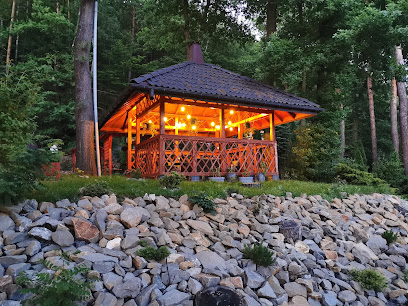
Budda cocktail bar
Experience the vibrant nightlife of Kraków at Budda Cocktail Bar, where innovative cocktails meet an energetic atmosphere in the heart of the city.
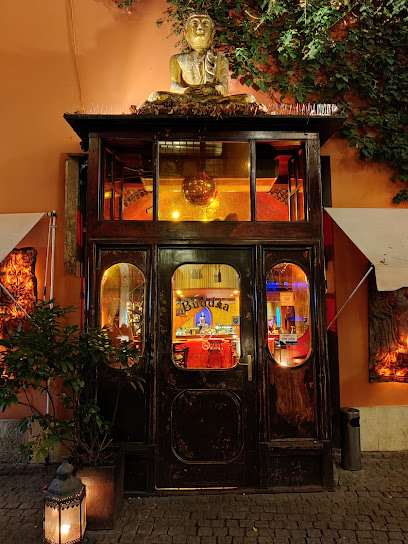
Jaś Wędrowniczek Hotel Restauracja
Experience the best of Polish cuisine and exceptional event hosting at Jaś Wędrowniczek in Rymanów, where every meal is a celebration of flavor.
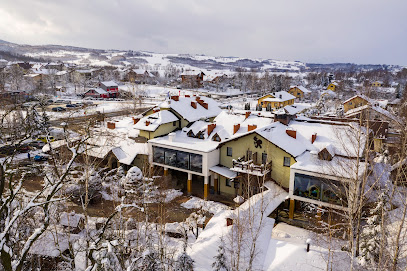
Restauracja Gościniec Dworski w Ropie
Experience authentic Polish cuisine in a family-friendly atmosphere at Restauracja Gościniec Dworski, a culinary gem in Ropa.
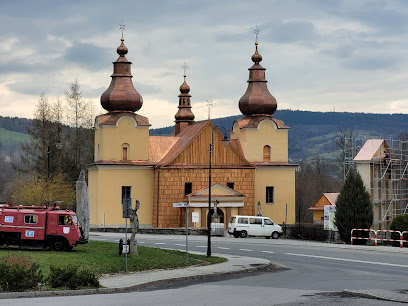
Local Phrases about Beskid Niski Mountains
-
- HelloCześć
[cheh-shch] - GoodbyeDo widzenia
[doh veed-zen-yah] - YesTak
[tahk] - NoNie
[nyeh] - Please/You're welcomeProszę
[pro-sheh] - Thank youDziękuję
[jyen-koo-yeh] - Excuse me/SorryPrzepraszam
[pzeh-prah-sham] - How are you?Jak się masz?
[yahk shcheh mahsh] - Fine. And you?Dobrze. A ty?
[doh-bzheh. ah tih] - Do you speak English?Czy mówisz po angielsku?
[chi moo-veesh poh ahng-yehls-koo] - I don't understandNie rozumiem
[nyeh roh-zoo-myem]
- HelloCześć
-
- I'd like to see the menu, pleaseChciałbym zobaczyć menu, proszę
[h-chyah-wim zoh-bah-chich meh-noo, pro-sheh] - I don't eat meatNie jem mięsa
[nyeh yem myen-sah] - Cheers!Na zdrowie!
[nah zdroh-vyeh] - I would like to pay, pleaseChciałbym zapłacić, proszę
[h-chyah-wim zah-plah-cheech, pro-sheh]
- I'd like to see the menu, pleaseChciałbym zobaczyć menu, proszę
-
- Help!Pomocy!
[poh-mo-tsi] - Go away!Idź sobie!
[ee-j shoh-byeh] - Call the Police!Zadzwoń po policję!
[zahd-zvohn poh poh-leet-syeh] - Call a doctor!Zadzwoń po lekarza!
[zahd-zvohn poh leh-kah-zah] - I'm lostZgubiłem się
[zgoo-byeh-wem shcheh] - I'm illJestem chory
[yeh-stem hoh-rih]
- Help!Pomocy!
-
- I'd like to buy...Chciałbym kupić...
[h-chyah-wim koo-peech] - I'm just lookingTylko się rozglądam
[tih-koh shcheh rohz-gwohndam] - How much is it?Ile to kosztuje?
[ee-leh toh kohsh-too-yeh] - That's too expensiveTo jest za drogie
[toh yest zah dro-gyeh] - Can you lower the price?Czy można obniżyć cenę?
[chi moo-na ohb-nee-zhich cheh-neh]
- I'd like to buy...Chciałbym kupić...
-
- What time is it?Która jest godzina?
[k-too-rah yest goh-dzee-nah] - It's one o'clockJest pierwsza
[yest pyeh-roov-shah] - Half past (10)Pół do dziesiątej
[poow doh dzyeh-shoon-teh] - MorningRano
[rah-no] - AfternoonPopołudnie
[pop-woh-wood-nyeh] - EveningWieczór
[vyeh-choor] - YesterdayWczoraj
[v-choh-rye] - TodayDziś
[jeesh] - TomorrowJutro
[yoo-troh] - 1Jeden
[yeh-den] - 2Dwa
[dvah] - 3Trzy
[tshih] - 4Cztery
[ch-teh-rih] - 5Pięć
[pyehntch] - 6Szesc
[shehshch] - 7Siedem
[syeh-dem] - 8Osiem
[oh-shyem] - 9Dziewięć
[dzyeh-nyehtch] - 10Dziesięć
[dzyeh-shoon-teh]
- What time is it?Która jest godzina?
-
- Where's a/the...?Gdzie jest...?
[gdzyeh yest] - What's the address?Jaki jest adres?
[yah-kee yest ah-drehss] - Can you show me (on the map)?Czy możesz mi pokazać (na mapie)?
[chi moo-zhesh mee poh-kah-zahch (nah mah-pee-eh)] - When's the next (bus)?Kiedy jest następny (autobus)?
[kyeh-dih yest nah-stehp-nih (ow-toh-boos)] - A ticket (to ....)Bilet (do ....)
[bee-let (doh)]
- Where's a/the...?Gdzie jest...?
History of Beskid Niski Mountains
-
The Beskid Niski Mountains have been inhabited since ancient times. The region is most notably associated with the Lemko people, an ethnic group of Rusyn origin. The Lemkos first settled in the area around the 14th and 15th centuries, bringing with them unique traditions, language, and cultural practices. Their distinctive wooden churches, known as ‘cerkwie,’ dot the landscape and are a testament to their rich cultural heritage.
-
During the medieval period, the Beskid Niski region was a borderland between the Kingdom of Poland and the Kingdom of Hungary. This strategic position led to the construction of several fortifications and castles, such as the ruins of the Kamieniec Castle in Odrzykoń. These historical structures played crucial roles in the defense and administration of the borderlands.
-
In the late 18th century, the partitioning of Poland led to the Beskid Niski Mountains falling under the control of the Austro-Hungarian Empire. This period brought significant economic and infrastructural developments, including the construction of railways and roads that facilitated easier access to the region. The cultural influence of the Austro-Hungarian era is still evident today in the architecture and urban layout of towns such as Gorlice.
-
One of the most significant events in the history of the Beskid Niski Mountains is the Battle of Gorlice-Tarnów during World War I. In 1915, this battle saw the Central Powers, led by Germany and Austria-Hungary, defeat the Russian forces, significantly altering the course of the war on the Eastern Front. The battle had a devastating impact on the local population and left many scars on the landscape, including cemeteries and memorials that can still be visited today.
-
After World War II, the Beskid Niski region experienced significant upheaval due to Operation Vistula (Akcja Wisła) in 1947. This operation, conducted by the Polish communist government, aimed to forcibly relocate the Lemko population and other ethnic minorities to the western and northern parts of Poland to suppress nationalist movements. The operation led to the depopulation of many villages in the Beskid Niski Mountains, leaving behind abandoned homes and a lasting impact on the cultural landscape.
-
In recent decades, there has been a revival of interest in the cultural and historical heritage of the Beskid Niski Mountains. Efforts have been made to preserve and restore the traditional Lemko wooden churches and to celebrate the unique traditions of the region. Festivals, museums, and cultural centers now play a significant role in promoting the rich history and diverse cultural background of this picturesque area.
Beskid Niski Mountains Essentials
-
The Beskid Niski Mountains are located in southeastern Poland, straddling the border with Slovakia. The nearest major city is Kraków, which has an international airport (John Paul II International Airport Kraków-Balice). From Kraków, you can take a train or bus to the town of Gorlice, which serves as a gateway to the Beskid Niski region. Alternatively, you can rent a car and drive, which offers the flexibility to explore the area at your own pace.
-
Public transportation in the Beskid Niski Mountains includes buses and trains that connect the major towns and villages. However, the most convenient way to explore the region is by car, as it allows you to access remote trails and attractions. Taxis are available but can be expensive for long distances. For those who prefer a more eco-friendly option, bicycle rentals are available in some towns.
-
The official currency in Poland is the Polish Zloty (PLN). Credit and debit cards are widely accepted in hotels, restaurants, and larger shops, but it is advisable to carry some cash, especially if you plan to visit smaller villages or rural areas. ATMs are available in major towns like Gorlice, but they may be scarce in more remote areas.
-
The Beskid Niski Mountains are generally safe for tourists. However, it is always wise to take standard precautions such as avoiding isolated areas at night and keeping an eye on your belongings in crowded places. There are no specific high-crime areas targeting tourists, but it's always best to stay vigilant. Be cautious when hiking in remote areas and let someone know your plans.
-
In case of emergency, dial 112 for immediate assistance, which is the European emergency number. There are local police stations and medical facilities in towns like Gorlice. It is recommended to have travel insurance that covers medical emergencies. Pharmacies are available in larger towns where you can purchase over-the-counter medications. For serious medical issues, you may need to travel to a larger city like Kraków.
-
Fashion: Do dress in layers as the weather can change quickly in the mountains. Wear sturdy hiking boots if you plan to trek. Religion: Do respect local customs and traditions, especially when visiting churches. Public Transport: Do be respectful and give up your seat to elderly passengers. Don't eat or drink on public transport. Greetings: Do greet people with a handshake and a smile. Eating & Drinking: Do try local dishes like pierogi and kwaśnica. Don't refuse hospitality as it is considered impolite.
-
To experience Beskid Niski like a local, visit the open-air museums that showcase traditional Lemko and Boyko architecture. Engage with locals who are often willing to share stories about the region's history and culture. Don't miss visiting the Magura National Park, which offers stunning natural beauty and diverse wildlife. For a unique experience, try attending a local festival or folk event to immerse yourself in the regional culture.
Trending Landmarks in Beskid Niski Mountains
Nearby Cities to Beskid Niski Mountains
-
Things To Do in Tarnow
-
Things To Do in Rzeszow
-
Things To Do in Košice
-
Things To Do in Poprad
-
Things To Do in Uzhhorod
-
Things To Do in Zakopane
-
Things To Do in Krakow
-
Things To Do in Mukachevo
-
Things To Do in Miskolc
-
Things To Do in Kielce
-
Things To Do in Nyiregyhaza
-
Things To Do in Bielsko-Biala
-
Things To Do in Lviv
-
Things To Do in Banská Bystrica
-
Things To Do in Martin

